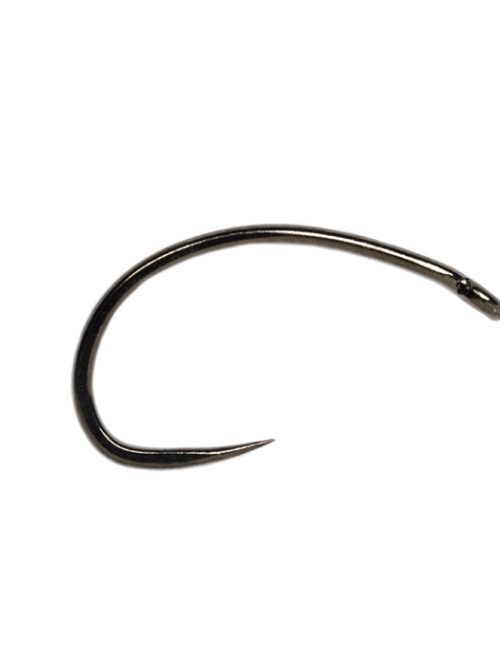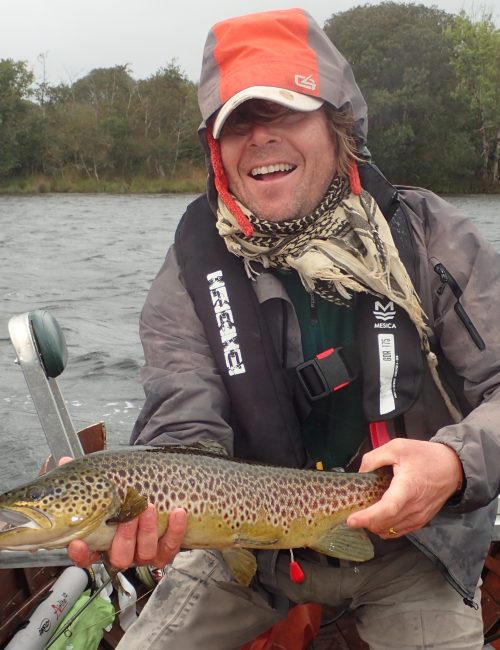Rutland Water has just trialed “early morning boats” for 3 Saturdays in the summer, where anglers got the chance to fish on a boat from 05:00am. For me, this was an opportunity I just couldn’t miss. I love fishing at first light, the wind is always lighter, there is minimal disturbance, fish are more confident and always seem to feed heavily, especially in the surface layers, but more importantly, it’s when the resident fish often feed so your chances of a really good fish are increased dramatically.
My 14 year old son Albert Coales and I set off for Rutland at 04:00am where Nigel Savage greeted us at the boat jetty and helped us into the boat, confirming what we already knew “the fish are high in the water and feeding heavily on pin fry…fishing wasn’t easy”…
Pin Fry feeding fish are seen as difficult and almost impossible to catch, I accept that they are very challenging but personally I would rather catch 1 grown on fish than 5 or 6 that have recently been introduced to the water. A friend of mine and probably the most accomplished angler I know Gareth Jones once explained to me the path many of us take through our angling life and how our focus changes as we become more accomplished anglers. “When you start fishing it’s all about numbers, you want to catch the most fish by any means, then after a while you progress to targeting the biggest fish before eventually, you want to catch the most challenging and difficult fish” I always used to take some of his comments with a pinch of salt, but as I get older (or simply more experienced) I actually agree with almost all of them, and none more so than the phrase above.
There is a definite sense of achievement in catching a grown on fish naturally feeding, especially when the food source is tiny and numerous – the odds are simply stacked against the angler – it simply means more than roly-polying a snake back on a Di – 7.
Pin Fry love shallow, weedy water as it offers safety, often the weed acts as a filter or barrier to the water in the main body of the reservoir. It is not affected as much by higher winds and so does not colour up as quickly making the water particularly clear in most instances – just as it was today – visibility was 15 – 20ft and the water like gin.
Albert and I exited the boat harbour and decided to follow the contours of the bank up the North Arm, motoring slowly along the weed-beds looking for surface activity. Rather than to target a single fish we knew that our chances would be increased if we could find a small shoal working the same area. Fish were rising consistently from Carrot Creek to Armley Wood, mostly in a band of water about 40m out, which was basically along the vast weed-beds that had grown over the last month. The fish were “pushing water” basically charging through the top 18 inches gouging on the pin fry. This was going to be difficult, as there wasn’t any margin for error. A stealthy approach followed by a quick accurate cast and we had a chance literally for the first or second cast… after which the fish would be spooked and off, meaning we had to wait for the next rising fish (rather than to cast and disturb the water).
Faced with such difficult conditions I reasoned that we may as well try for an “overwintered” fish rather than a recent stockie or even a well-mended fish and avoided the obvious temptations at Armley Wood, instead deciding to venture right to the bottom of the North Arm and the vast weed-beds at the Transformer, which always hold the better quality fish.
The winds were lighter than forecast and we were greeted with almost a flat calm. The odd fish was breaking the surface attacking the Pin Fry, action was however intermittent and there was no pattern to the feeding.
I opted to play the percentages, the weed-beds around the old submerged road were teaming with Pin Fry, the water was almost black with them as the hugged the weed-bed and shoreline. Yet just 20m away there was a significant drop off straight into deeper water. I felt sure the better quality fish would leave the deep water and feed in this area at some stage during the morning… it was just a matter of time and patience.
With the fish obviously feeding so high in the water it really does limit your options, I decided to tackle us up with a 10ft leader with just 2 flies, a size 10 Shuttlecock on the point and just 2ft away a size 14 cheeked diawl bach, which accurately matched the size of the millions of pin fry in the water yet stood out slightly with its fluorescent orange head.
Shuttlecock (often called CDC patterns) are made using are the feathers from the back of a duck directly around the preen gland that are naturally very buoyant (CDC stands for Cul De Canard – French for “duck bottom“)
It’s thought the use of CDC’s in fly fishing originated from the Jura Mountains in Switzerland during the early 1920’s where fly fishermen used this feather in dry flies to aid buoyancy in a particular pattern called Moustique. (A generic Moustique pattern features a cock-hackle tail, a slender body of wrapped raffia or thread ribbed with contrasting colour silk thread, and a CDC collar)
In the 1980’s Marjan Fratnik from Slovenia, designed the F Fly which consisted of two or three CDC feathers and tied in at the eye of a thread-covered hook shank with the feather tips facing over the bend. This simple but deadly fly triggered renewed interest in the possible uses for CDC.
Marc Petitjean took things a stage further and is largely responsible for how CDC patterns developed over the next 10 years including the modern patterns that we now all take for granted
The leader set up is important, you want the flies to remain in the surface, rather than to be pulled under by a heavy fluorocarbon tippet, for this reason, the first 5ft of my leader is standard 7.99lb Fulling Mill Co-polymer, attached to which is 5ft of 6.50lb Fulling Mill Masterclass fluorocarbon (including a dropper). The co-polymer doesn’t sink very quickly and allows me to hold my flies in the surface film for longer. The flurocarbon is near invisible to the fish and allows for better presentation in the gin clear water.
At around 7:00am there was a distinct increase in the amount of surface activity, fish were topping more consistently and seemed to be working towards us in small shoals of 2 or 3 fish. I decided to let my son have the first shot ensuring that he waited for the fish to get well into his casting range, so his cast was as easy as possible. I told him multiple times the need for accuracy and that he would only get 1 or 2 shots at them. The trout will have a very small angle of vision as they are literally just under the surface – there is no margin for error.
He made a cast towards a pair of fish steadily moving towards us, his flies hit the water and the CDC cocked like a float – he made a slow pull to straighten the leader and draw both flies directly into the path of the fish… everything looked perfect, unfortunately, the fish swam straight past ignoring his flies.
This chain of events was repeated 3 or 4 times, sometimes the fish would be spooked by his cast landing too heavily, other times not – the end result was always the same, the fish did not take.
We were both feeling a little despondent, when Albert decided to cast at a fish out the back of the boat (against my better judgment) it instantly went over the CDC and he lifted into a sizeable fish that powered off into the mist. It’s important to have a plan of what you are going to do – these are not stock-fish, but well-mended resident fish of 4lb fish are easily capable of snapping an 8lb leader – you must assess the water and it features; are there any weed beds, marker buoys etc that could cause any issues… these fish will head for structure and you need to stop or turn them in time. Fortunately, the fish was already in open water and headed out further into the reservoir away from the weed-beds. I kicked the engine into life and gently guided the boat out in the direction of the fish. In open water it was simply a case of hanging on and not rushing, the light wire hook of the CDC could easily bend out under sustained pressure or a little over-enthusiasm once the fish got close to the boat.
Fortunately Albert played the fish perfectly and a 3.5lb rainbow was soon gracing his net. He was loving every second especially being one fish up, on his Dad in such difficult conditions!
It was now my turn, and I re-positioned the boat along the weed-bed, some 20m away in fresh water, I waited and made my cast but also suffered the same fate, fish after fish was covered but there was no take, with the sun now breaking through I knew that the early morning rise was coming to a conclusion and it was looking extremely likely that we would finish the morning with just 1 fish.
Then a breakthrough just as my confidence was ebbing away I watched a broad fish roll over my CDC, I lifted and the water exploded as I watched a sizeable fish power off. I knew that in reality this was my only chance, and I had to be extremely careful with such a light hook.
I guided the fish into open water, as it bored deep, I could feel the distinctive head shaking and methodical pull of a brown, rather than the erratic fast stop-start run of a rainbow, 3 minutes later and we still hadn’t seen the fish, it was keeping it’s distance some 20m away from the boat refusing to come up in the water. After what seemed like an eternity the fish broke the surface and I gently guided it into the net. A brown that was fin-perfect and which I estimated weighed around 5lb, not the largest fish I have ever caught but certainly one of the most pleasurable. Following a quick photo we released the fish, hoping to be once again reunited when it breaks into double figures.






